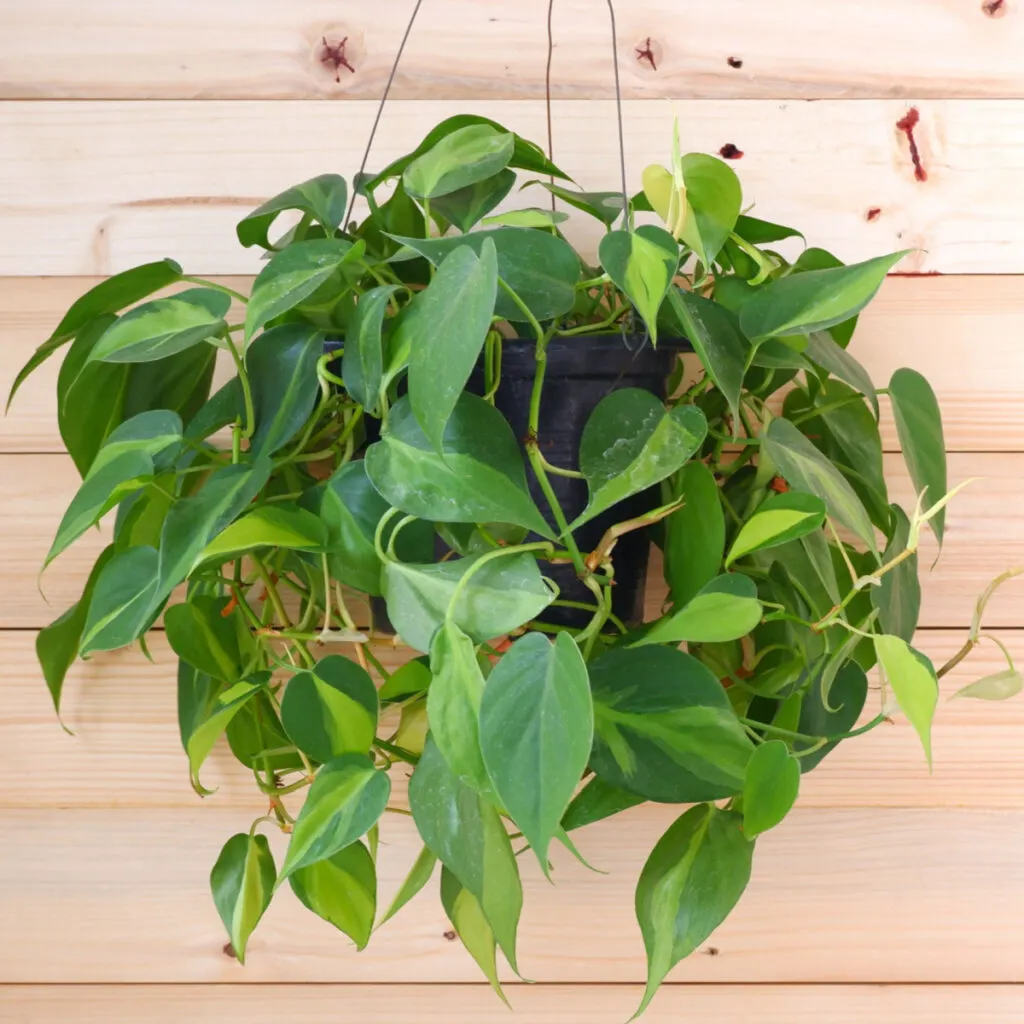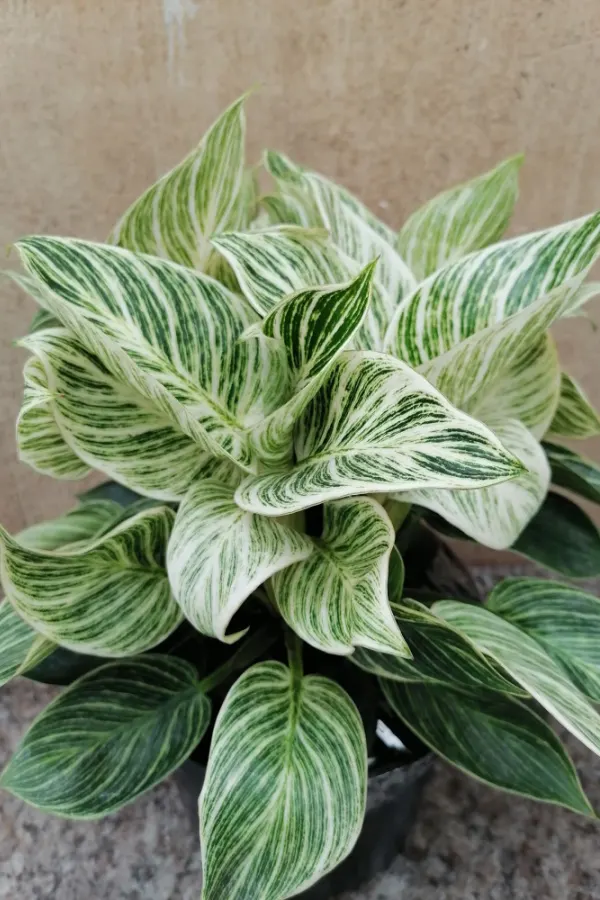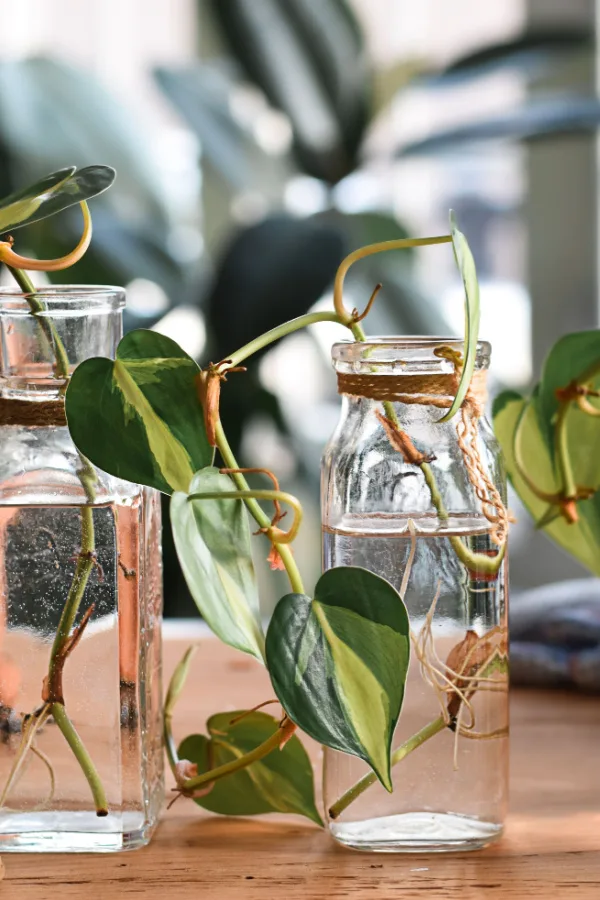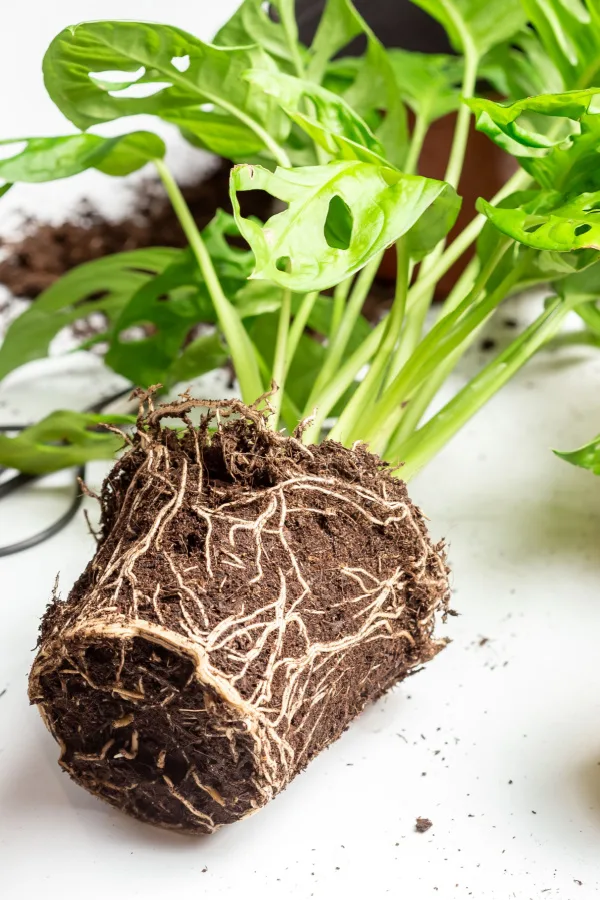If you are looking for easy to grow, low care houseplants that can add instant beauty and interest to your home, then philodendrons are the plant for you!
In spite of their fancy long name, philodendrons are low-maintenance tropical plants that can bring your indoors to life with their glossy, flowing foliage. And with hundreds of different varieties to choose from, there’s definitely a philodendron to fit any home decor or need. Best of all, they require such little care, anyone can grow them!
From green thumb veterans to first-time houseplant owners, philodendrons are easy to handle and manage. Quite the forgiving plant, they can handle a bit of neglect without worry of perishing. Even better, they are also able to adapt well to a wide range of growing conditions within any home.

Unlike many other houseplants that can be stressed by a change in light, heat or sunlight, philodendrons are able to usually adapt and go with the flow – all while continuing to grow full and healthy.
With adding the beauty of philodendrons to your home in mind – here is a look at what types you can grow, and how to have them growing strong, healthy and beautiful with the slightest of care!
How To Grow Philodendrons – The Easy Care Houseplant For Everyone!
Varieties Of Philodendrons
One of the best things about philodendrons is there is a variety to fit almost every space and situation. Philodendrons fall into two main categories: vining and non-climbers.
Vining Philodendrons
Vining plants push out aerial roots and long vines. The vines can be grown long, cascading over hanging baskets, or trained to climb up a trellis. Vining philodendrons are perfect for adding vertical interest all over the home. Two of the more popular vining varieties are Brasil & Swiss Cheese Vine:
Philodendron Brasil – Features heart-shaped variegated leaves in shades of dark green and lime. New leaves start out reddish-orange and slowly turn their variegated colors. (Affiliate Plant Link: Philodendron Brasil)
Monstera Adansonii – Also called the Swiss Cheese Vine due to the unique oval holes that mature leaves end up creating. It grows best when climbing up moss-covered poles or stakes. (Affiliate Plant Link: Monstera Adansonii)
Non-Climbing Philodendrons – How To Grow Philodendrons
Non-climbing philodendrons, on the other hand, are just like their namesake. These types do not need a trellis or support system for climbing or vining. They grow more upright and are perfect for almost any type of pot or container. Here are a few of the most popular varieties that don’t climb:
Heartleaf Philodendron – This is one of the more popular vining varieties and features heart-shaped dark green leaves. They can sometimes be mistaken for pothos, which are in the same family as philodendrons. (Affiliate Plant Link: Heartleaf Philodendron)
Philodendron Birkin – This non-climbing variety features large oval leaves that are mostly dark green but contain thin white stripes. As the plant grows upright, it produces a self-standing, thick upright stem. (Affiliate Plant Link: Philodendron Birkin)

Monstera Deliciosa – Also known as a split-leaf philodendron, the monstera is a popular choice for making a big impact on home spaces. It features large, heart-shaped leaves with slits along the edges. This fast-growing philodendron grows around 1 to 2 feet a year and will reach its full mature size in around 3 years. (Affiliate Plant Link: Monstera Deliciosa)
Basic Care – How To Grow Philodendrons
Since there are so many different varieties and cultivators of philodendrons, the specific care will vary slightly for each. However, most basic needs remain the same for all philodendron types. The main goal for success is to mimic their natural tropical environment as closely as possible.

Philodendrons grow best in loose, organic potting soil mixes that drain well and quickly. If using regular potting soil, mix it with perlite or sand to help increase drainage. Always ensure that your growing container has plenty of drainage holes to allow excess moisture to leave.
Most varieties of philodendrons do well when you partially allow the soil to dry out between waterings. As with most houseplants, overwatering is more often an issue than underwatering.
Check the soil’s moisture and only water after the top inch has completely dried out. This usually results in watering every one to two weeks. However, the time frame will depend on your home’s temperature, the size of the plant and container, as well as which philodendron variety you are growing.
This is where an inexpensive instant read soil meter can come in handy! It can tell you exactly what the moisture level is down at the lower root level of the plant, making knowing when to water a snap. Affiliate link: 4 in 1 Soil Meter Tester
Lighting Needs – How To Grow Philodendrons
In nature, philodendrons grow under dappled sunlight. As a houseplant, because of this, it is best to give them brighter but indirect sunlight. Too intense of sunlight will cause the leaves to burn and turn yellow, while too little light will result in leggy growth with large spaces between leaves. They can especially benefit from well lit rooms (artificial light) in the fall and winter when days and light are shorter.

To keep the soil and plants powered, philodendrons benefit greatly from a good dose of all-purpose liquid fertilizer once a month in the summer months. For fall and winter, reduce feedings to every other month due to lower light and growing conditions.
As an alternative, you can also use worm castings to fertilize your potted philodendrons. This provides houseplants with a great low-dose fertilizer with no risk of burning delicate foliage. (See our article, “How To Fertilize Houseplants With Worm Castings”)
Propagating & Pruning Philodendrons – How To Grow Philodendrons
Many different varieties of philodendrons can be easily propagated and grown from cuttings. This is especially the case for vining varieties like the Heartleaf or Brazil Philodendrons. The best time to take cuttings is in the springtime. This allows for more natural light from longer hours of sunlight.
To take a cutting, use a pair of scissors or small pruners and cut a 6-inch section of the plant’s stem. Be sure to include a leaf node in the cutting. Place the end of the stem in a small container so that the node is below the water level.
You should start to see root growth after a couple of weeks. After the cutting has plenty of new roots, plant it in a new container with moistened soil. Just like that – you have a second plant!
As for pruning, most non-climbing varieties shouldn’t need pruning. For vining plants, remove any vines that have become leggy or too long. You can use the clippings to propagate new plants as long as it contains a leaf node. As the plant’s foliage ages, some leaves will naturally turn yellow and die. Remove any yellowing growth by simply snipping off with scissors.
Repotting Philodendrons – How To Grow Philodendrons
As philodendrons grow, they will occasionally need to be repotted into larger containers. This is especially the case with non-climbing varieties. If you start to see roots growing out of the drainage holes of the current container, it’s time to repot.

Repotting is best done in the spring or summer before the plant starts to push out new growth. Choose a container that is only an inch or two larger than its current pot. Carefully remove the plant from its current container and gently loosen the root ball. Place it in the new container with fresh potting soil. Water thoroughly and add additional soil if needed.
Philodendrons truly are an easy care, low-maintenance plant. Their beautiful foliage and many varieties make them a great houseplant to add to your growing collection – or to start one for the first time!
Follow Our Facebook Page For Even More Great Tips! Simple Garden Life Facebook Page
Simple Garden Life is a website dedicated to keeping gardening fun, simple and enjoyable! We publish two new articles each week along with a new garden podcast episode every two weeks. This article may contain affiliate links.
